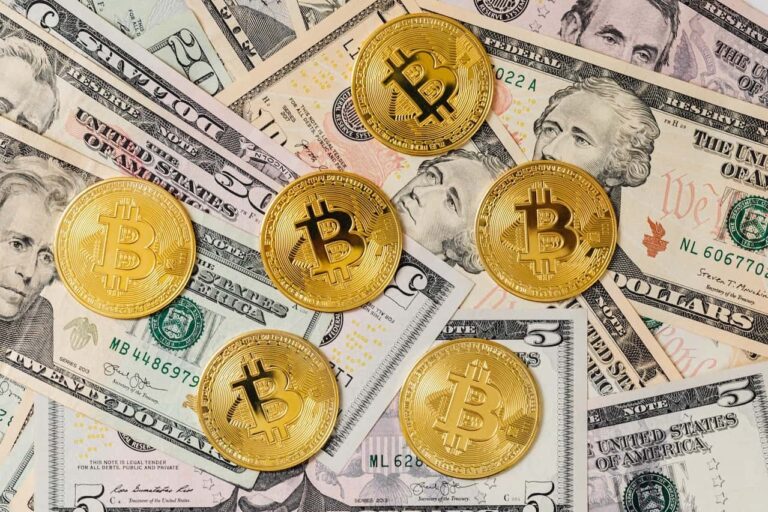Tokenization is a term that has been gaining traction in the financial world in recent years. In simple terms, it refers to the process of converting real-world assets into digital tokens that can be traded on a blockchain.
This technology has the potential to revolutionize the way financial transactions are conducted by increasing liquidity, reducing transaction costs, and improving accessibility.
In this article, we will delve into the concept of tokenization in finance, its benefits and challenges, and its potential role in the future of financial transactions.
Table of Contents
What is tokenization?
Tokenization is the process of converting real-world assets, such as stocks, bonds, or real estate, into digital tokens that can be traded on a blockchain. Each token represents a fraction of the underlying asset, and ownership of the token is recorded on a decentralized ledger.
This allows investors to buy, sell, and trade fractional ownership of assets in a peer-to-peer fashion, without the need for intermediaries such as brokers or banks.
One of the key differences between tokenization and traditional financial transactions is that it enables fractional ownership of assets. This means that investors can buy and sell small portions of an asset, rather than having to purchase the entire asset outright. This makes it easier for retail investors to gain exposure to assets that were previously only available to institutional investors.
There are several examples of tokenization in finance. For instance, tokenized stocks allow investors to trade shares of a company on a blockchain. Similarly, tokenized bonds allow investors to buy and sell bonds in a peer-to-peer fashion, with each token representing a fraction of the underlying bond.
The benefits of Tokenization
Tokenization offers several benefits in the world of finance
- increased liquidity: Tokenization makes buying and selling fractional ownership of assets easier, increasing liquidity in the market. This means that investors can trade assets more easily, and previously illiquid assets can now be traded in a peer-to-peer fashion;
- reduced transaction costs: Tokenization eliminates the need for intermediaries such as brokers or banks. This reduces transaction costs and makes investments more affordable;
- improved accessibility: Tokenization democratizes investment opportunities, allowing retail investors to invest in assets that were previously only available to institutional investors. This means that a wider range of people can benefit from investment opportunities and earn potential returns;
- increased transparency: Tokenization records ownership of assets on a decentralized ledger, increasing transparency and reducing the risk of fraud. Investors can have greater confidence in the legitimacy of their investments;
- programmable ownership: Tokenization enables the creation of smart contracts, which can automate certain aspects of asset ownership. For example, a smart contract could automatically distribute dividends to token holders or enforce ownership restrictions.
Read also: The endless possibilities of blockchain uses and applications
Challenges and risks
While tokenization offers many benefits, there are also some challenges and risks that should be considered:
- lack of regulation: The regulatory landscape for tokenization is still developing. There is a lack of clear guidelines on how tokenized assets should be treated. This can create uncertainty for investors and increase the risk of fraud;
- security concerns: Tokenization relies on blockchain technology, which is not immune to security breaches. Hacking or other security breaches could compromise the integrity of tokenized assets, putting investors’ funds at risk;
- potential for fraud: Tokenization can be susceptible to fraudulent activities, such as fake token offerings or fraudulent smart contracts. Investors need to exercise caution when investing in tokenized assets;
- liquidity risks: While tokenization can increase liquidity. There is also a risk that some tokenized assets may not have enough buyers or sellers, leading to reduced liquidity.
To mitigate these risks, it is important to have proper regulatory frameworks in place and ensure adequate security measures. Additionally, investors should exercise caution and due diligence when investing in tokenized assets.
Future of Tokenization
The future of tokenization in finance looks promising, with many potential new use cases and innovations on the horizon. Here are a few potential areas where we may see growth:
- alternative assets: Tokenization can be applied to a wide range of assets, beyond stocks, bonds, and real estate. We may see tokenized art, collectibles, and other alternative assets in the future;
- increased adoption: As more investors become familiar with blockchain technology, we may see increased adoption of tokenized assets in the mainstream financial industry;
- interoperability: As different blockchain networks become more interoperable, we may see increased liquidity and trading volume for tokenized assets;
- decentralized finance (DeFi): Tokenization is closely linked to the rise of DeFi, which seeks to create a more decentralized financial system. We may see new DeFi applications that leverage tokenization to create new investment opportunities;
- green finance: Tokenization can help increase transparency and accountability in green finance. It will allow investors to track the environmental impact of their investments.
As with any emerging technology, there are still uncertainties around the future of tokenization. However, it is clear that the potential applications in finance are vast and exciting. As blockchain technology continues to evolve and more investors become familiar with the benefits of it, we can expect to see continued growth and innovation in this space.
Read also: Distributed Ledger Technology (DLT): advantages, disadvantages and impacted sectors












